The Digital Pathology Global Pioneer Award 2016 Winners Announced
Honored and grateful beyond words to be among those chosen by my peers to receive this pioneering award for work in digital pathology. Countless folks over the past two decades have contributed to development of the technology, applications, use cases, programs, business models and mentored others in the safe use of the technology with one goal in mind – improving patient care.
What started out as a science project in the Army to help support remote pathologists by using telepathology in 1999 has introduced me to amazing opportunities to help develop the science, technology & promote the industry/market, particularly through this site since 2007. Along the way I have been fortunate to meet some the brightest, energetic and dedicated pathologists, scientists, researchers and technologists as well as hundreds of colleagues from industry who continue to bring innovative products to market as providers of the technology to allow us as practitioners tools that allow for us to provide better care to our patients more efficiently.
As anyone knows who has pioneered an idea, it isn’t always easy. I quickly learned in the early 2000s, that while the technology was fascinating and complex and intricate, changing people’s perceptions, hearts and minds was a bigger challenge than the technical issues. What you may appreciate as being important for patient care, not everyone may share your opinions. I think this was particularly true in the early days with what many considered not only an unproven “emerging” technology but a “disruptive” technology rather than what I have always perceived as an enabling and enhancing technology to what are common practices in pathology.
You learn as a pioneer, as a change agent, fortunately, the technology usually wins and in many cases one’s biggest skeptics become your most ardent supporters and frequent users who think of applications and ideas that were previously unthought-of.
My sincere thanks to Philips and PathXL for sponsoring this award through a peer-nomination process and my congratulations to many other pioneers recognized through this process for your hard work in your respective institutions and practices.
Please join me in congratulating all the award winners for their pioneering efforts with mentions of their work and impact in the field of digital pathology!
The Results are in!
We asked the world of Pathology the question, “Who do you see as a pioneer in driving Digital Pathology within your department, organization, or industry?”
After a busy few months, the results are in, they have been counted and verified. We now would like to reveal the top 5 Digital Pathology Global Pioneers chosen by you.
We were truly impressed by the number of nominations and comments left by the pathology community. This inaugural, peer-nominated award highlighted the ever-increasing excitement for digital pathology and served to recognise the hard work of those individuals that are true pioneers in the field of Digital Pathology.
We would like to thank everyone who participated and congratulate all the nominees. Below, we are honoured to introduce the Top 5 recognized pioneers:
1st – Dr. Keith Kaplan – Surgical Pathologist & Publisher, tissuepathology.com
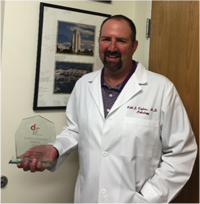 Dr. Kaplan is a graduate of Michigan State University and Northwestern University Feinberg School of Medicine. He completed his residency training in anatomic and clinical pathology at Walter Reed Army Medical Center, Washington, DC. Whilst at Walter Reed, Dr. Kaplan was named Resident of the Year, and in conjunction with the Armed Forces Institute of Pathology, Dr. Kaplan founded and directed the Army Telepathology Program. This Program connected 25 hospitals internationally for consultation via telepathology. Dr. Kaplan was also with Mayo Clinic, Rochester, Minnesota as an Associate Professor of Pathology of Mayo Medical School. Keith is an active member of the College of American Pathologists and executive board member of the American Pathology Foundation. Since 2007, Dr. Kaplan has been publisher of The Digital Pathology Blog at www.tissuepathology.com
Dr. Kaplan is a graduate of Michigan State University and Northwestern University Feinberg School of Medicine. He completed his residency training in anatomic and clinical pathology at Walter Reed Army Medical Center, Washington, DC. Whilst at Walter Reed, Dr. Kaplan was named Resident of the Year, and in conjunction with the Armed Forces Institute of Pathology, Dr. Kaplan founded and directed the Army Telepathology Program. This Program connected 25 hospitals internationally for consultation via telepathology. Dr. Kaplan was also with Mayo Clinic, Rochester, Minnesota as an Associate Professor of Pathology of Mayo Medical School. Keith is an active member of the College of American Pathologists and executive board member of the American Pathology Foundation. Since 2007, Dr. Kaplan has been publisher of The Digital Pathology Blog at www.tissuepathology.com
Quote from one of the nominations:
“I serve on the CAP Cytopathology Committee with Keith. He has demonstrated great knowledge and avocation toward digital pathology. He is deserving of the award. Dr. Kaplan currently serves as a member of the College of American Pathologists, American Society of Clinical Pathology and the American Society of Cytopathology as well as the American Pathology Foundation. He is also an executive board member of the American Pathology Foundation. Dr. Kaplan has previously served as a member of the College of American Pathologists Informatics Committee, Standards Committee, and Instrumentation Resource Committee and as co-chair of the American Telemedicine Association Telepathology Special Interest Group and as a board member for the Digital Pathology Association.”
2nd – Dr. Darren Treanor – University of Leeds
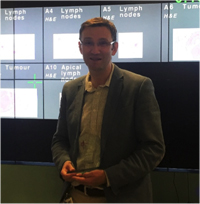 Dr. Darren Treanor is a consultant liver and gastrointestinal pathologist at Leeds Teaching Hospitals NHS Trust, UK, and honorary senior lecturer at the Leeds Institute of Molecular Medicine, University of Leeds. Dr. Treanor also runs the Leeds virtual pathology project (www.virtualpathology.leeds.ac.uk) and is the principal investigator on the UK National Institute for Health Research (NIHR)-funded project entitled “A virtual reality microscope for pathology”, which aims to study current diagnostic and teaching practice to inform the development of a better pathology workstation.
Dr. Darren Treanor is a consultant liver and gastrointestinal pathologist at Leeds Teaching Hospitals NHS Trust, UK, and honorary senior lecturer at the Leeds Institute of Molecular Medicine, University of Leeds. Dr. Treanor also runs the Leeds virtual pathology project (www.virtualpathology.leeds.ac.uk) and is the principal investigator on the UK National Institute for Health Research (NIHR)-funded project entitled “A virtual reality microscope for pathology”, which aims to study current diagnostic and teaching practice to inform the development of a better pathology workstation.
Quote from one of the nominations:
“Darren is the perfect candidate for the Digital Pathology Pioneer
award. Over more than a decade he has led a vast range of successful efforts in the field, tirelessly working to meet the most important challenges of the digital pathology community. The Powerwall and Leeds Virtual Microscope are just the tip of the iceberg of achievements, spanning everything from occupational psychology to human-in-the loop image analysis. The list of important contributions goes on and on: 3D histology, color perception, validation methodology, EQA… He has a unique profile of being an active pathologist and medical researcher combined with a degree in computer science, making it possible to act as a sorely needed bridge between technology and clinical prerequisites.”
3rd – Dr. Dariusz Borys – Loyola Medicine
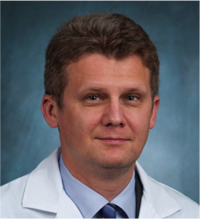 Dariusz Borys, MD, received his Doctor of Medicine from the University of Wroclaw, Poland in 1994 and completed a residency program in anatomic pathology at County General Hospital in Wroclaw, Poland in 1995. He completed his postdoctoral research at the University of Arizona, Tucson, Arizona in 1998. He continued on with and completed residency training in both anatomic pathology and clinical pathology at University of Illinois at Chicago in 2001. He received a Pediatric Pathology Fellowship at New York University, New York, New York in 2005 and followed that with an Orthopedic Pathology Fellowship at NYU Hospital for Joint Diseases, New York, New York in 2006. He is currently a Loyola orthopaedic pathologist and is the director of digital pathology.
Dariusz Borys, MD, received his Doctor of Medicine from the University of Wroclaw, Poland in 1994 and completed a residency program in anatomic pathology at County General Hospital in Wroclaw, Poland in 1995. He completed his postdoctoral research at the University of Arizona, Tucson, Arizona in 1998. He continued on with and completed residency training in both anatomic pathology and clinical pathology at University of Illinois at Chicago in 2001. He received a Pediatric Pathology Fellowship at New York University, New York, New York in 2005 and followed that with an Orthopedic Pathology Fellowship at NYU Hospital for Joint Diseases, New York, New York in 2006. He is currently a Loyola orthopaedic pathologist and is the director of digital pathology.
Quote from one of the nominations:
“The enthusiasm and dedication of Dr. Dariusz Borys are driving a functioning and thriving Digital Pathology Laboratory at Loyola since 2013. In the new lab anatomical pathology slides are scanned to provide high-resolution digital histology images, helping Loyola pathologists to provide images that improve medical care and enhance tumor board presentations, research projects and publications. The new technology also enables the emerging practice of telepathology, with sharing and viewing of histology slides at locations outside the hospital and a streamlined ability to consult experts at external sites.”
4th – Dr. Chee Leong Cheng – Singapore General Hospital
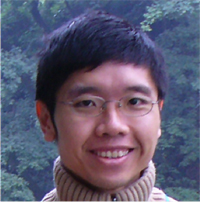 Dr. Chee Leong Cheng is a trained anatomical pathologist and currently practicing as a consultant pathologist in Singapore General Hospital (SGH), with special interest in haematolymphoid pathology and healthcare informatics. He was actively involved in the implementation and roll out of the digital pathology system in SGH under the expansion of the digital pathology solution program. He also had previous experience with implementation of electronic medical records in the military as well as National electronic health record program and several other health information technology enablement projects and programs through his previous role in public service related agencies.
Dr. Chee Leong Cheng is a trained anatomical pathologist and currently practicing as a consultant pathologist in Singapore General Hospital (SGH), with special interest in haematolymphoid pathology and healthcare informatics. He was actively involved in the implementation and roll out of the digital pathology system in SGH under the expansion of the digital pathology solution program. He also had previous experience with implementation of electronic medical records in the military as well as National electronic health record program and several other health information technology enablement projects and programs through his previous role in public service related agencies.
Quote from one of the nominations:
“Dr Cheng is the lead of the digital pathology programme in Singapore General Hospital and has successfully driven the implementation and adoption of one of the largest digital pathology implementation for diagnostic use in an academic medical centre. He is the lead author of the publication titled “Enabling digital pathology in the diagnostic setting: navigating through the implementation journey in an academic medical centre.” (Cheng CL, et al. J Clin Pathol. 2016 Feb 12. pii: jclinpath-2015-203600. doi: 10.1136/jclinpath-2015-203600), which outlines the systematic approach of digital pathology implementation.”
5th – Professor Peter Hamilton – Queen University Belfast & Philips
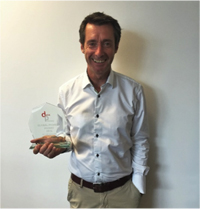 Professor Peter Hamilton is Head of Tissue Biomarker Imaging and Informatics within the Centre for Cancer Research and Cell Biology at Queen’s University Belfast. Peter is also the Founder and Chief Scientist at PathXL Ltd, now part of Philips Digital Pathology Solutions. For the past 25 years, Professor Hamilton has been leading research on digital pathology, computer vision and tissue bioimaging in diagnostic and molecular cancer pathology for the high throughput quantitative analysis identification of novel tissue and cell biomarkers markers. Being a pioneer of early techniques in tissue measurement, image analysis, pathology informatics and tissue biomarker discovery, he has been published in over 150 peer reviewed publications in some of the world’s leading journals.
Professor Peter Hamilton is Head of Tissue Biomarker Imaging and Informatics within the Centre for Cancer Research and Cell Biology at Queen’s University Belfast. Peter is also the Founder and Chief Scientist at PathXL Ltd, now part of Philips Digital Pathology Solutions. For the past 25 years, Professor Hamilton has been leading research on digital pathology, computer vision and tissue bioimaging in diagnostic and molecular cancer pathology for the high throughput quantitative analysis identification of novel tissue and cell biomarkers markers. Being a pioneer of early techniques in tissue measurement, image analysis, pathology informatics and tissue biomarker discovery, he has been published in over 150 peer reviewed publications in some of the world’s leading journals.
Quote from one of the nominations:
“For the past 25 years Peter Hamilton has been giving his excellence in various ways in Digital Pathology like – research on computer vision and decision support in diagnostic cancer pathology and the identification of novel digital tissue and cell markers for diagnostics, prognostics and for predicting response to therapy in cancer. I am following him since 2007 and really amazed to see that he has such innovative and enthusiastic thoughts in Digital Pathology, and also started it in very early days where as many others didn’t even know what digital pathology was.”
This Peer Nomination award was open to anyone across the world involved in digital pathology. We would like to thank everyone who took the time out to nominate their thought leaders and pioneers of Digital Pathology.
PathXL, the creator of this award has some exciting news of its own, we are now part of Philips and their Digital Pathology Solutions Business. To find out more about Philips Pathology Solutions come meet the team at ECP September 25-29, 2016 in Cologne Germany or Read More here. Our aim with this award has remained the same, to recognize and celebrate industry professionals who are leading the way in digital pathology regardless of the application area they are focused.
Please join us in congratulating all the nominees, personally or via Twitter @PathXL.
Source: PathXL

































